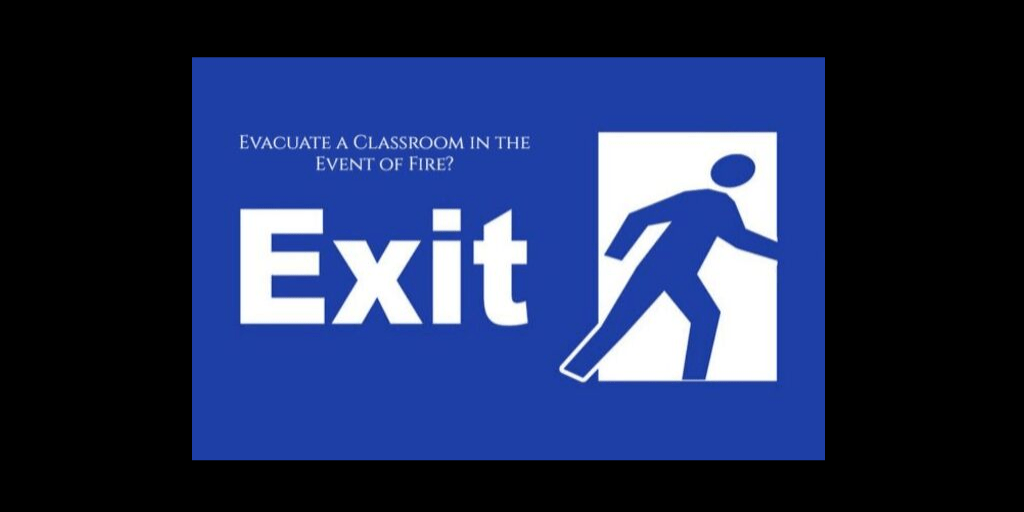How to Evacuate a Classroom in the Event of Fire
Any fire guide should be placed as a focus of every classroom, cafeteria, office, or other locations. Since the info provided here is general, each school of the school district should adopt actions to meet its precise requirements. This guide needs to become a part of their institution’s emergency preparedness and response program. For top outcomes, present the guide during staff training at the start of every year. Review the procedures, together with the entire school team so that everyone in the building knows his/her role in a crisis.
Schools must be prepared for just about almost any kind of emergency and prepare their students. While no one ever imagines something terrible to occur, it is always great to be prepared just in case.
General Evacuation Procedures
After the fire alarm sounds leave the building by the nearest stairwell or exit, avoid using lifts. Move to the rally point for the building and stay in office or classroom groups. Observe directions from campus police. Do not re-enter the building until instructed to do.
Always remember ACES if you are stuck in a fire or smoke.
Alert: Activate the nearest fire alarm station, call campus police, and examine the specific location of the flame. Don’t think a second time about activating the fire alarm station upon detection of fire and/or smoke.
Confine: To avoid the spread of fire and smoke close all the windows and doors of the fire area so that the smoke and fire does not spread.
Evacuate: As soon as you hear the noise of the fire alarm. At the same time, leave the building immediately by the nearest stairway or exit. And remember one thing in particular that it is good not to use the lift. After exiting the building one by one without panic, report your survival to your supervisor or the management of your school.
Special Assistance: Folks who may need help must inform the Office of Disability Support Services and Student Life and make a personal evacuation strategy. Whenever probable, everyone should leave the building. But if you are not able to do so for any cause, you should look for protection at the nearest stairwell.
Fire Routes
When a fire happens, nobody knows where exactly that fire would be and what exits that will probably be obstructed. It’s essential to ensure that there are two exits from every classroom. Administrators should make a fire evacuation plan that exhibits two methods to leave each class in case of a fire. A first-floor classroom could exit out the classroom door along with outside a building doorway or through the windows. Post these plans in each class and any other area in the building.
Fire Safety Tips
Call if There is More Smoke: You are trapped in a fire, and there is too much smoke around you, take small breaths through your nose so that the smoke does not penetrate your lungs, keep calm, get down and crawl. Cleaner air will be near the floor. And remember this “Go down and go!”
Find them before your door opens: Use your 6th sense more in the fire and smoke. Look for the doors and feel their knob or handle before opening them, so that you will get an idea of which way the door will open. Keep in mind that if the door gets hot while touching do not open it. If the door is cold, open it a little, and if there is heat and smoke inside, then do not open the door without caution. Stay inside the classroom and call the police or fire brigade.
Go to the nearest Staircase and Ladders: If more fire and smoke stop the way for you to go out, then go the other way. Always try to go out from your top floor, do not use a lift. Why I am saying, do not use the elevator? In the fire, the lift shaft is filled with smoke and electrical service is also interrupted. Due to which you can get into more trouble.
Install Steel Buildings in Extra Space: As we know that certified prefabricated steel buildings are well insulated to stand against fire and adverse atmospheric conditions. So, you should have a steel building on your campus for the protection in case of an emergency.
Use Fire Extinguishers:
If you have fire extinguisher training, and in this case there is not enough equipment to extinguish the fire, you can use a portable fire extinguisher to extinguish the fire.
You can use the instructions written below Portable Fire Extinguisher:
- Pull the pin-up
- Aim the nozzle
- Press the Handle Properly
- Sweep the spray in the direction of fire
More fire safety resources
https://classroom.synonym.com/fire-evacuation-plans-schools-7928871.html
https://www.highspeedtraining.co.uk/hub/conducting-fire-drill-in-schools/






